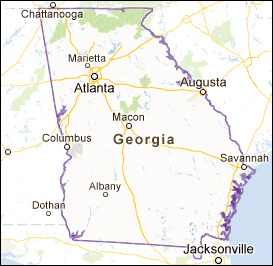By Jim Ellis
 Oct. 16, 2020 — An October polling plethora has been released in Georgia, which is becoming one of the most important 2020 election cycle states both in terms of the presidential and US Senate outcomes. As the only state featuring two US Senate races, Georgia has attracted more than its share of polling universe attention.
Oct. 16, 2020 — An October polling plethora has been released in Georgia, which is becoming one of the most important 2020 election cycle states both in terms of the presidential and US Senate outcomes. As the only state featuring two US Senate races, Georgia has attracted more than its share of polling universe attention.
Quinnipiac University released new data yesterday that either is detecting a new trend or is an outlier. Their results give Democratic presidential nominee Joe Biden, and US Senate candidates Jon Ossoff and Raphael Warnock big leads in their respective races, something no other survey research firm is reporting.
The Quinnipiac poll (Oct. 8-12; 1,040 likely Georgia voters, live interview) finds Biden posting a 51-44 percent lead over President Trump, Ossoff claiming a similar 51-45 percent advantage over Sen. David Perdue (R), and Rev. Warnock outpacing both Rep. Doug Collins (R-Gainesville) and appointed Sen. Kelly Loeffler (R) by 19 and 21 percentage points (41-22-20 percent).
Six other pollsters, also surveying in October, largely see things much differently.
Polling within the same period as Quinnipiac are Survey USA, Data for Progress, and Morning Consult.
Survey USA chose exactly the same sampling period as Quinnipiac, Oct. 8-12. With a sample size of 877 likely Georgia voters also in live interviews, they see a dissimilar political landscape. While they find Biden leading in the presidential race, his margin is only two points, 48-46 percent.
The two pollsters’ Senate numbers are starkly different. S-USA finds Sen. Perdue leading Ossoff, 46-43 percent, a net nine-point variance when directly compared with Quinnipiac. The jungle primary special election race is even more disparate. While Quinnipiac projects one of the biggest leads for Warnock during the entire election cycle, S-USA finds only a four-point difference between he and Sen. Loeffler, 30-26 percent, a far cry from the Q-Poll’s 41-20 percent.
The two pollsters even see a different ballot test order. While the Q-Poll finds a Warnock-Collins-Loeffler split, Survey USA projects a virtual three-way battle among Warnock, Loeffler, and Collins. The latter poll posts Rep. Collins’ statewide support at 20 percent.






